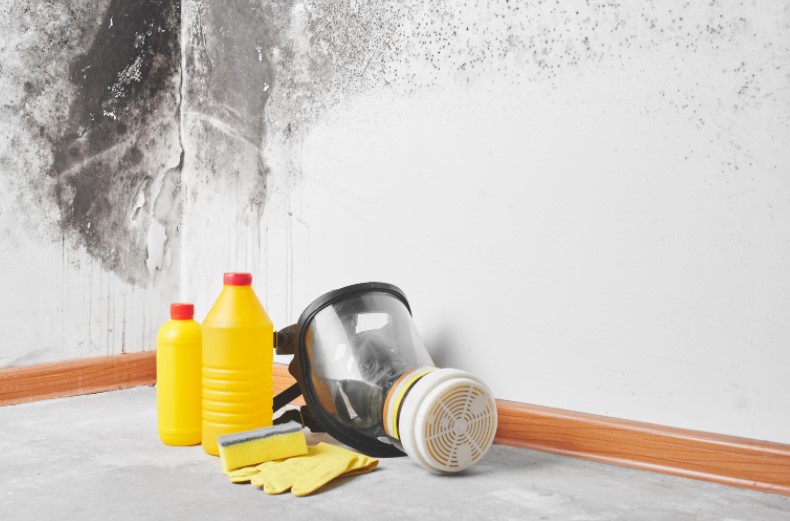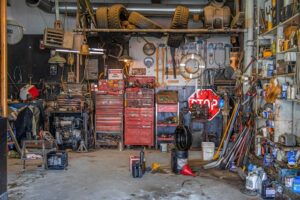
Mold can grow anywhere, but you can commonly find them in areas like places near the ducting areas or pipes, cabinets, basements, kitchens, or bathrooms. In addition, it only needs moist ground to grow, damaging your home. Mold hiding behind the drywall is another common problem you might have to deal with because cotton, wood, and drywall are their ideal food sources.
Mold growth in the ceiling is another common problem caused by the accumulation of moisture and the lack of ventilation in that area. If the room has enough oxygen, moist areas, and has a comfortable temperature, you can be confident that mold will start growing and spreading. Below are nine of the most common causes of mold growth.
Leaking Pipes
Leaking pipes are the first common cause of mold growth. It usually happens in closets under the sink and behind drywall. It can also lead to mold growth in the walls and ceilings. Leaks might be coming from pipes in the roof. Upon seeing mold growth in these areas, you should naturally check your piping for leaks.
Moisture Buildup
During winter, your home might experience condensation buildup on cold surfaces due to temperature changes. You can often find mold on cold surfaces like brick walls, floor tiles, concrete surfaces, and metal piping. If you notice condensation buildup, you should ensure to ventilate each room properly to get rid of it. Or else, these pockets will become the breeding ground for mold spores, leading to mold growth.
Damp Basement
Basements are under the ground; hence, they’ll naturally be vulnerable to high humidity and moisture levels due to poor air circulation and lack of ventilation. For that reason, increased moisture and dampness will cause mold growth. Leaks from the roof or other higher areas of the house will accumulate in the basement; hence, you’ll have to clean and maintain your basement correctly. It’ll help prevent harmful mold growth.
Leaking AC Units
Most homes will have air conditioning units, which can also cause mold growth. It’s an allergenic type of mold that quickly turns into thick, white patches due to condensation buildup or leaking air conditioning units. Don’t forget to check your AC unit’s filters, air vents and ducts, and piping to ensure no moisture buildup and leaks. If you’re having problems with the ducts, you should call an air duct cleaning company.
Damp Foundation
Be attentive to your landscape’s slope. You shouldn’t have it built in a way that can’t drain water. If you ignore that problem, you might already have mold growth. Moisture and rainwater will eventually pool and trickle around the foundation, leading to mold growth on the walls. Your landscapers can improve your lawn’s slope. Your yard can also benefit from a drainage system that can direct water away from the foundation.
Major Flooding
One of the problems you’ll have to deal with after experiencing major flooding is mold growth. Your home will take days or weeks before it’s completely dry after a flood, so this makes it the best breeding ground for mold spores. It can result in dangerous, toxic mold spores to make things worse. You’ll have to call in an expert if your home has completely dried out for a thorough inspection and mold testing.
Bad Ventilation
Your home’s lack of ventilation is the best lure for mold spores, further spreading their growth in your home. Furthermore, the stagnant air inside your home is one of the best breeding grounds for mold growth, so make sure to rid your house. Most steam from bathing, cooking, and appliances creates humidity, leaving surfaces sticky and damp. Get rid of this moisture from your home to minimize growth risks.
Leaking Roofs
You shouldn’t also ignore a partially damaged roof due to extreme weather conditions and wear and tear to minimize mold growth. Over time, slow leaks can also cause moisture buildup on ceiling boards and walls. Don’t forget to check the exteriors and tiles of your roof for potential leaks and damage to avoid mold growth. You’ll also have to check the attic because it’s one of the places where mold commonly grows.
High Humidity
If your area is sensitive to humidity, you might experience mold growth due to the high moisture content in the air. You might commonly see mold under the kitchen sink, in dark closets, ceilings, or walls. Mold resulting from humidity is common if you live near a large body of water, which can worsen due to the lack of ventilation. Moisture buildup inside your house can also increase the risks of mold growth. Make sure to improve ventilation in your home, especially during summer.
To prevent irreversible damage to your property, you must determine the causes of mold growth and ways to avert it from the get-go. It’ll protect your family and keep your property in tip-top condition.




